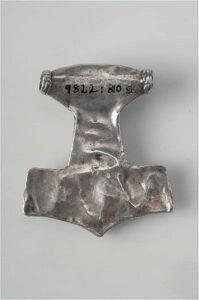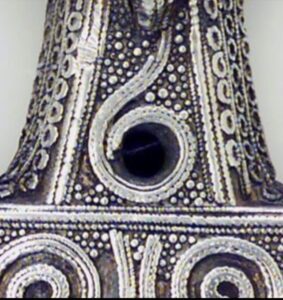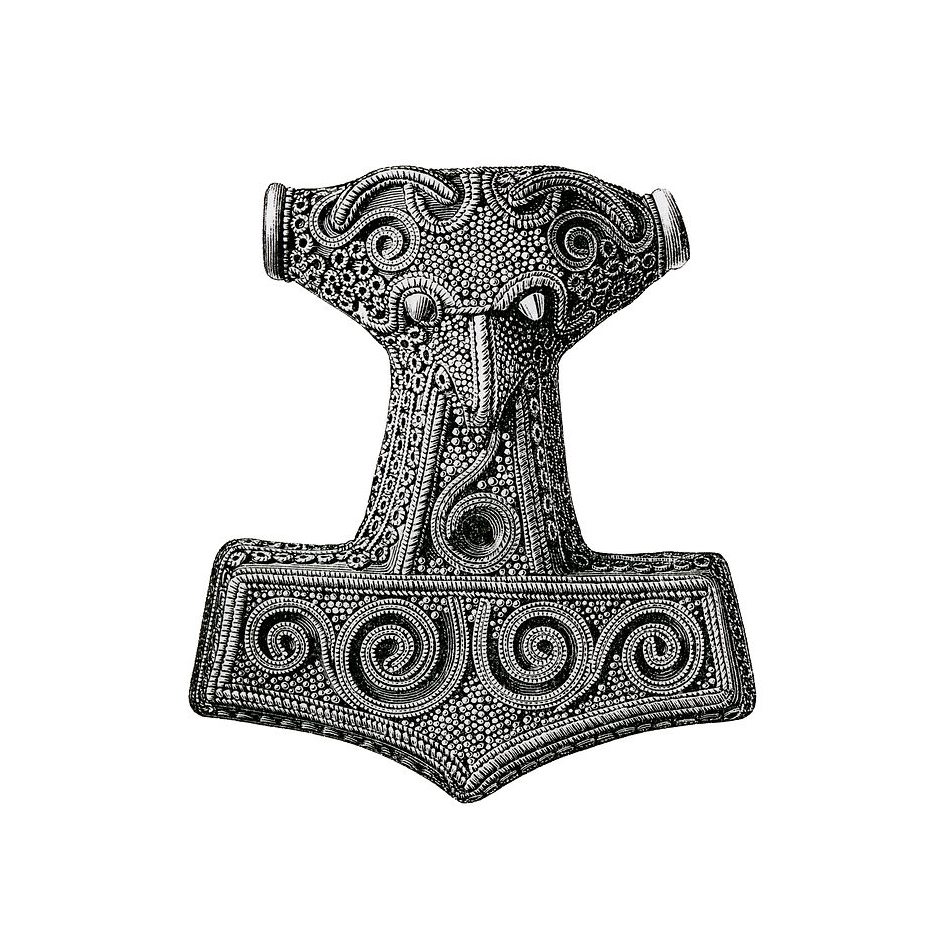Or how form follows production.
I was having a look at the Skåne Thors hammer and noticed that the back has a very interesting pattern. My first thought was that it might be deformation stemming from a support system used when fusing the piece in the furnace. Another possibility I thought was that the the spring-like lines was part of an internal scaffold giving strength and rigidity to the piece given that the hammer is made of very thin sheets of silver.

By looking closely at a photo of the hammer from the front, where the light was just right, I was able to see the internal scaffold through the front hole on the hammer, confirming the latter hypotheses. 

After confirming that what we can see on the back is representive for what is on the inside of the pendant I concluded that a cylinder was soldered/fused across the bail on the inside. This explains the hole in the front.
Let me explain. When fusing a hollow pendant like the Skåne hammer you will trap a lot of gas that is usually vented out through a hollow bail. In this case that gas escape channel is blocked. If not vented the piece might explode or deforme. To solve this the designer of the pendant opted for a front air vent. This air vent was beautifully incorporated into the design of the hammer such that a thin whisps of air is seen going from the bird head symbolically connecting to the place where the hammer literally would have expelled a breath of air doing the manufacturing process. Seeing how breath was connected with “soul” and life in generel making the hammer draw breathe like this must have held a certain amount of spiritual significance.

